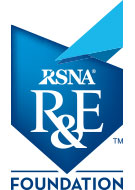Your Donations in Action: Jalal B. Andre, MD
The Cost and Prevalence of Patient Motion During MR


Motion artifacts, caused by patient motion during MR examinations, can frequently degrade image quality and were initially reported to occur in 10% to 42% of MR sequences in a select adult population.
In his 2016 RSNA Research Scholar Grant project, “Evaluating the Prevalence, Temporal Etiology, and Cost of Patient Motion During Clinical MR Examinations,” Jalal B. Andre, MD, University of Washington, Seattle, and his colleagues initially evaluated a week of clinical MR exams, which revealed that significant motion artifacts were present in 7.5% of outpatient and 29.4% of inpatient and/or emergency department MR examinations. The prevalence of repeat sequences was 19.8% of total MR examinations. Extrapolated over one calendar year, the analysis estimated that the cost implications of motion can approach $115,000 per MR scanner per year.
Taking this baseline knowledge, the researchers reviewed more than two calendar years of MR modality log file data and evaluated motion artifacts using a defined five-point clinical scale. In addition, they sought to implement and validate an AI-based MR motion artifact correction method using a multi[1]scale fully convolutional neural network (FCN).
The prevalence of prematurely terminated and repeated sequences, both of which were impacted by the presence of motion artifacts, was evaluated via MR log files in 142,668 individual MR sequences acquired over 1,008 days. Repeated diagnostic sequences comprised 17,526 (12.3%) of all attempted sequences and prematurely terminated sequences comprised 6,398 (4.5%) of all attempted sequences. Using $592/hour as a reasonable lost opportunity cost for the MR scanner, the total time lost (46,233 minutes) would suggest that $82,590/scanner/ year is lost due to repeated and prematurely terminated sequences.
Initial implementation of the FCN using a standard T2-weighted sequence revealed robust performance in mitigating motion artifacts even when select, radiologically detectable intracranial pathologies were present, suggesting that the FCN appropriately targeted motion artifacts only, and left the underlying image data relatively unaltered.
“The problem of patient motion and motion-associated image artifacts is ubiquitous, but also surprisingly under[1]documented; only a handful of studies have attempted to evaluate the prevalence of motion artifacts and the impact of MR sequence repeats,” Dr. Andre said. “This work demonstrates that modality log file data may be a useful tool to predict patterns of scanner and sequence performance that may help identify pitfalls of diagnostic imaging in a clinical environment, particularly with respect to patient motion. In addition, the implementation of an AI-based solution to motion correction is possible and may contribute to mitigating motion artifacts in select patient populations.”
The R&E Foundation grant has paved the way for Dr. Andre and a colleague to co-edit an upcoming book on the topic of motion correction in MR. The book is scheduled for release in early 2022.
For More Information
Learn more about R&E Foundation funding opportunities.